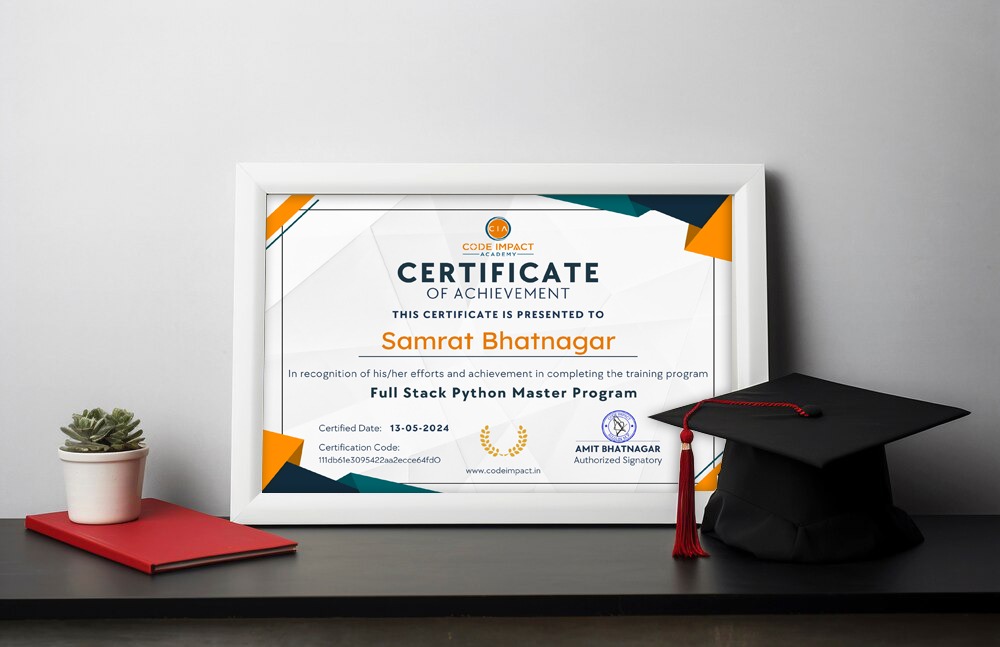Unlock the world of cybersecurity with our Ethical Hacking and Cybersecurity Certification Course. Designed for both beginners and professionals, this comprehensive program covers the latest techniques in ethical hacking, network security, and data protection. Gain hands-on experience with real-world scenarios, and earn a globally recognized certification. Boost your career and safeguard digital environments with cutting-edge skills. Enroll now to become a cybersecurity expert!
Try before you enroll
Flexible learning options
Dedicated mentorship
Career guidance included
1.Overview of ethical hacking and its importance.
2Differences between ethical hacking and malicious hacking.
3.Legal implications and responsibilities of ethical hackers.
1.Passive and active reconnaissance.
2.Footprinting tools and techniques.
3.Information gathering from public sources
1.Network scanning methods and tools.
2.Identifying live hosts and open ports.
3.Understanding network topology.
1.Identifying and analyzing vulnerabilities.
2.Using vulnerability scanners.
3.Manual vulnerability assessment techniques
1.Gaining access to systems.
2.Privilege escalation.
3.Maintaining access and covering tracks.
1.Types of malware and their effects.
2.Methods for detecting and removing malware.
3.Creating and using backdoors.
1.Network sniffing techniques.
2.Tools for capturing and analyzing network traffic.
3.Techniques for evading IDS/IPS systems.
1.Understanding social engineering attacks.
2.Techniques for phishing, baiting, and other attacks.
3.Mitigation strategies.
1.Types of DoS and DDoS attacks.
2.Tools for launching DoS attacks.
3.Defending against DoS attacks.
1.Understanding session hijacking.
2.Techniques for session hijacking.
3.Mitigation and defense strategies.
1.Common web application vulnerabilities (e.g., SQL injection, XSS).
2.Tools and techniques for testing web applications.
3.Securing web applications.
1.Wireless network vulnerabilities.
2.Tools for hacking wireless networks.
3.Securing wireless networks.
1.Basics of cryptography.
2.Common cryptographic attacks.
3.Implementing and breaking encryption
1.Planning and conducting penetration tests.
2.Reporting and documenting findings.
3.Ethical considerations in penetration testing.
1.Overview of cyber security and its importance.
2.Key concepts and terminologies.
3.The cyber security landscape.
1.Network architecture and design.
2.Firewalls, VPNs, and intrusion detection systems.
3.Securing network devices.
1.Securing workstations, servers, and mobile devices.
2.Endpoint protection platforms.
3.Best practices for endpoint security.
1.Authentication and authorization mechanisms.
2.Single Sign-On (SSO) and Multi-Factor Authentication (MFA).
3.Managing user privileges and roles.
1.Developing and implementing security policies.
2.Incident response and management.
3.Security awareness training.
1.Identifying and assessing risks.
2.Risk mitigation strategies.
3.Conducting risk assessments
1.Overview of security standards (e.g., ISO 27001, NIST).
2.Compliance requirements and audits.
3.Implementing security controls.
1.Protecting data at rest and in transit.
2.Data encryption techniques.
3.Data loss prevention (DLP) strategies.
1.Understanding cloud computing security.
2.Securing cloud services and infrastructure.
3.Compliance in the cloud.
1.Secure software development lifecycle (SDLC).
2.Common application vulnerabilities.
3.Application security testing.
1.Incident response planning and execution.
2.Digital forensics tools and techniques.
3.Evidence collection and analysis.
1.Gathering and analyzing threat intelligence.
2.Using threat intelligence to improve security posture.
3.Threat hunting techniques.
1.Roles and responsibilities within a SOC.
2.SOC tools and technologies.
3.Monitoring and responding to security incidents
1.Overview of popular cyber security frameworks.
2.Implementing frameworks in an organization.
3.Continuous improvement in cyber security.

Upon successful completion of any course, you'll receive a personalized, industry-recognized certificate from Code Impact, validating your new skills and knowledge.
Our commitment to quality education and processes is internationally recognized.
The application process consists of three simple steps. Once you apply for admission then your application will be reviewed and an offer of admission will be made to selected students. The selected students will be notified over email and phone, and will be alloted the next available batch within 1-2 working days.
Tell us a bit about yourself and why you want to join this program
An admission panel will redirect candidates based on their application
All the Selected candidates will be notified within 1–2 days
Rapid career advancement opportunities in the tech industry with competitive salary packages.
Work with leading tech companies and startups across the globe.
Stay updated with cutting-edge technologies and industry best practices.
Work on industry-relevant projects to build a strong portfolio
Learn from industry professionals with years of experience
Choose from multiple batches that suit your schedule
Industry-recognized certification upon course completion
Join 1000+ successful students who transformed their careers